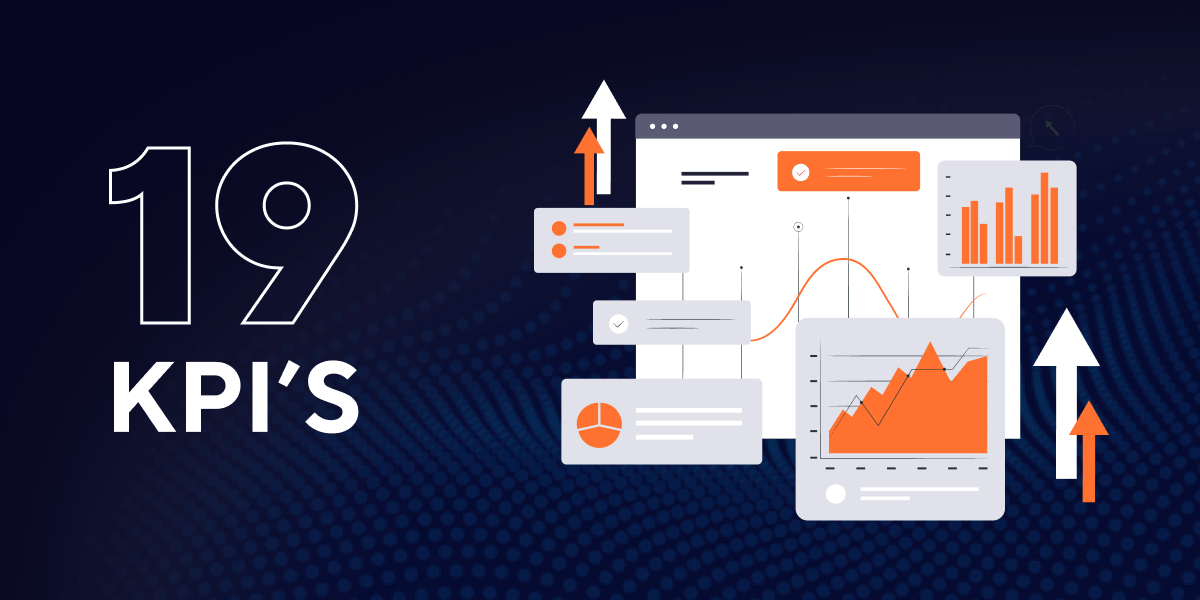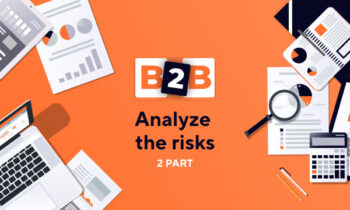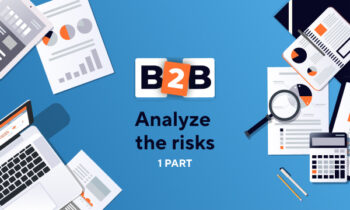19 KPIs to measure the success of your B2B e-commerce

KPIs, or Key Performance Indicators, allow you to assess the impact of your marketing strategies on your overall business objectives.
When launching a B2B e-commerce site, tracking B2B e-commerce KPIs helps you monitor the progress and success of your online business. These quantitative metrics highlight the impact of B2B e-commerce on your company.
By defining and measuring key performance indicators, you can evaluate strengths and areas for improvement, helping you optimize your commercial strategies.
Most KPIs are inspired by B2C e-commerce, but this article will focus on KPIs specific to B2B e-commerce.
Companies selling online to professional buyers can benefit from B2B-specific KPIs aimed at objectives such as increasing revenue, customer retention, and operational efficiency.
So, what are the essential KPIs for a B2B e-commerce solution? Which performance indicators are necessary to evaluate the return on investment (ROI) of a B2B e-commerce site?
Here is a list of 19 KPIs to help you manage your online B2B e-commerce solution.
1. Visitor acquisition
Visitors to your website are potential prospects. The goal is to convert those prospects into customers, based on the quality of your content marketing and product offerings.
Measuring traffic on your e-commerce site gives you insight into who your visitors are, where they come from, how they landed on your site, and what they expect from you.
[B2B e-commerce KPI #1] Number of visitors on the homepage (with potential views of an open or closed catalog depending on your B2B strategy).
In B2B, the difference is that in a closed-catalog e-commerce model, a visitor is always a client, not just a casual visitor comparing various e-commerce sites.
[B2B e-commerce KPI #2] Number of business account creation requests (visitors identified by email).
This metric tracks potential new clients requesting an account through a B2B-specific functionality.
2. Visitor-to-Prospect conversion rate
Prospects drive sales. The more qualified leads you have in your pipeline, the more opportunities you’ll have to close a sale.
A visitor becomes a qualified prospect once you obtain their email address, company name, and ensure they fit your target audience.
- [B2B e-commerce KPI #3] Number of identified visitors through logins.
- [B2B e-commerce KPI #4] Number of identified visitors with specific catalog views (offers and prices).
- [B2B e-commerce KPI #5] Identified visitor conversion rate.
- [B2B e-commerce KPI #6] Average session duration.
3. Sales conversion
The main indicator here is revenue, but it’s essential to analyze the steps leading to a purchase to identify areas for improvement in sales conversion.
- [B2B e-commerce KPI #7] Number of quotes generated.
- [B2B e-commerce KPI #8] Conversion rate from quotes to orders.
If this conversion rate is low, it may be necessary to optimize the quote request page (landing page) by improving its design, user experience (UX), and ergonomics.
- [B2B e-commerce KPI #9] Conversion rate from login to order placement.
- [B2B e-commerce KPI #10] Number of orders requiring workflow approval by a third party.
- [B2B e-commerce KPI #11] Number of orders placed outside business hours.
- [B2B e-commerce KPI #12] Percentage of orders submitted for approval.
- [B2B e-commerce KPI #13] Order frequency: average purchase period within a specific timeframe.
This B2B online sales indicator helps you identify ways to enhance the purchasing experience for your B2B clients and boost sales.
B2B e-commerce solutions serve as alternatives to other sales channels. It’s relevant to compare how clients move between channels on an individual level.
For instance, if clients place online orders more frequently than before, it indicates that your B2B e-commerce site effectively meets their needs. Conversely, if clients return to offline ordering after their first experience with your B2B e-commerce solution, it suggests that the platform needs improvement.
- [KPI 14 B2B e-commerce] Average basket value per client account
It’s useful to analyze the average order value of clients who research online before placing their orders offline. By comparing this with the average order value of offline clients who do not conduct online research, you can determine whether your B2B e-commerce site provides relevant product information and meets client expectations.
- [KPI 15 B2B e-commerce] Maximum basket value per client account
- [KPI 16 B2B e-commerce] Overall cart abandonment rate per client account
- [KPI 17 B2B e-commerce] Number of orders by payment method (Credit card, account payment, procurement card, etc.)
- [KPI 18 e-commerce B2B] Revenue generated outside business hours
This metric confirms a client need and serves as a strong argument for ongoing investment in your online store.
4. Operations and customer service
- [KPI 19 B2B e-commerce] Most Used Delivery Method (in-store pickup, standard delivery, etc.)This key indicator gives you a comprehensive understanding of your clients’ preferences and expectations regarding delivery options.
By defining e-commerce KPIs with your team, you ensure alignment and focus on online sales within your sales and marketing teams.
The KPIs you choose must align with your business objectives. Today, our knowledge of the B2B buying process shows that B2B companies, such as SMEs and mid-sized enterprises, prioritize cost savings, efficiency, and customer satisfaction. Therefore, KPIs must reflect these priorities.
Is your goal to increase customer satisfaction?
KPIs such as retention rates and return visits can help you evaluate your performance.
Or perhaps your goal is to focus on increasing sales?
In that case, choose KPIs like the number of online orders and average order value.
And you, have you identified new B2B e-commerce KPIs?
We would be thrilled to expand this article based on your feedback and needs! This list is non-exhaustive and provides an idea of the possibilities offered by a B2B e-commerce solution.
Which KPIs would you define in your specific context (e.g., network-based B2B e-commerce)?
Our expert team is available to help you interpret your B2B e-commerce KPIs.


